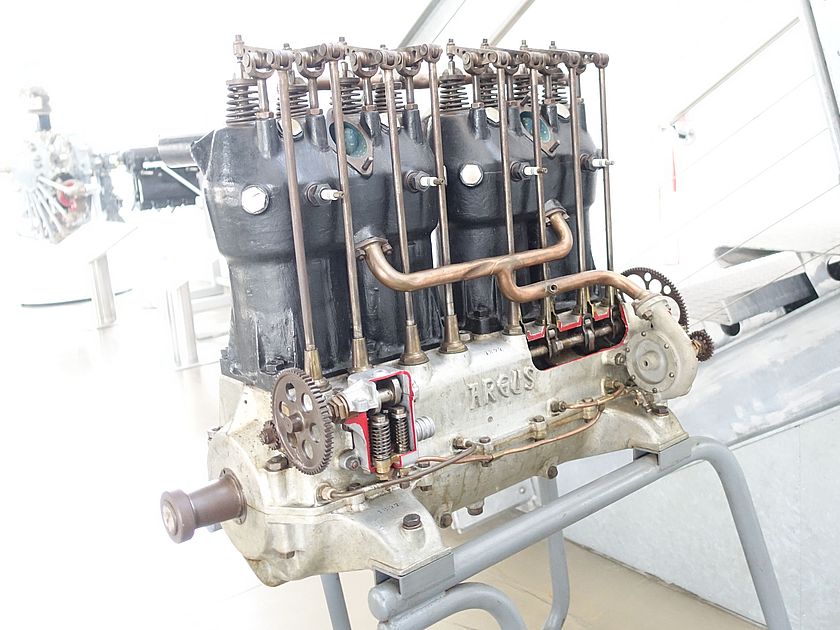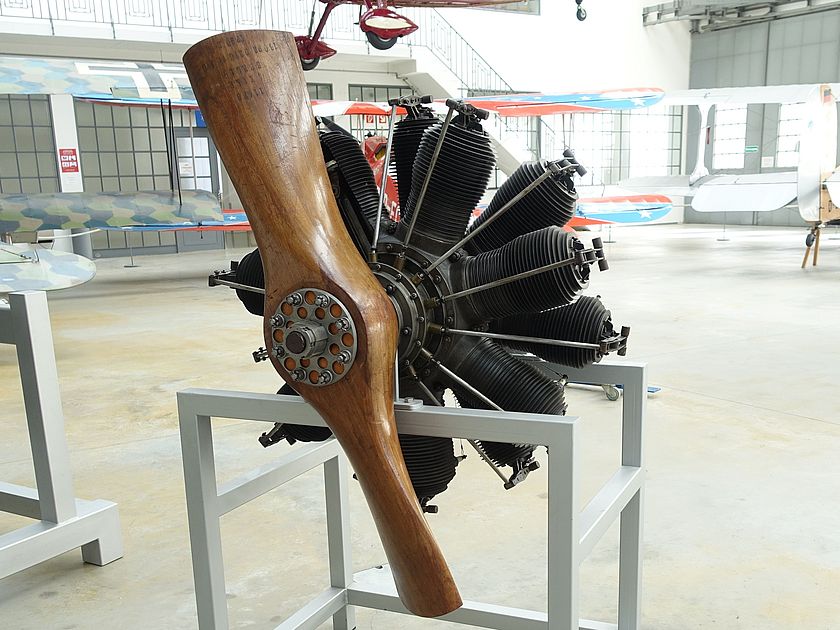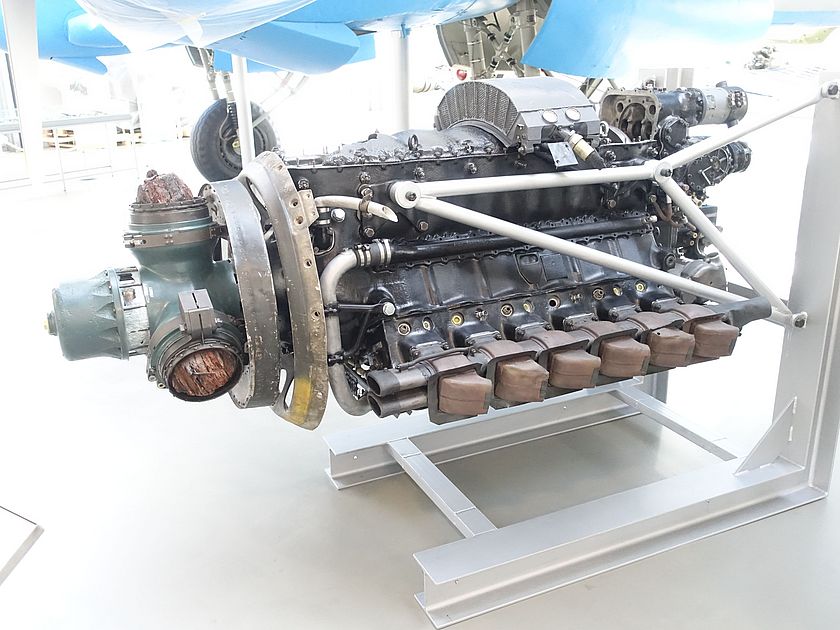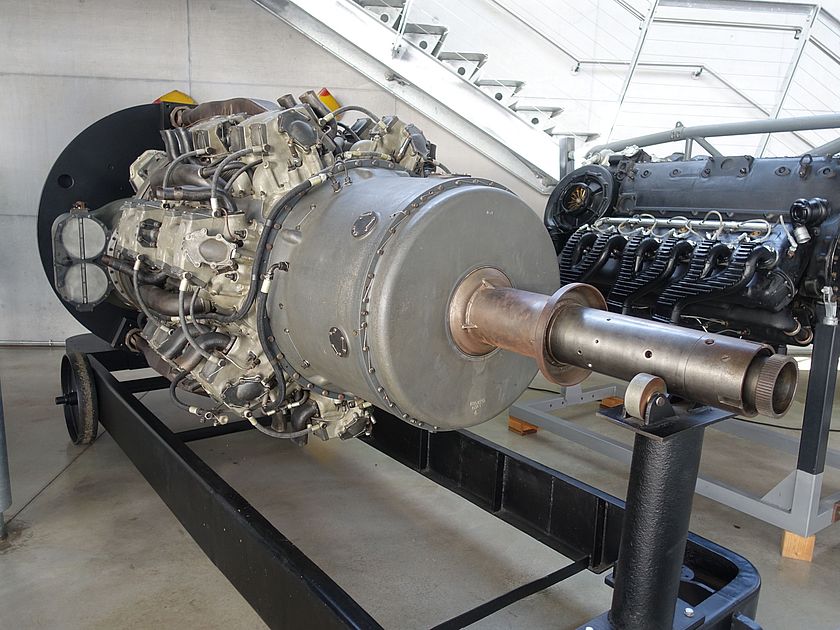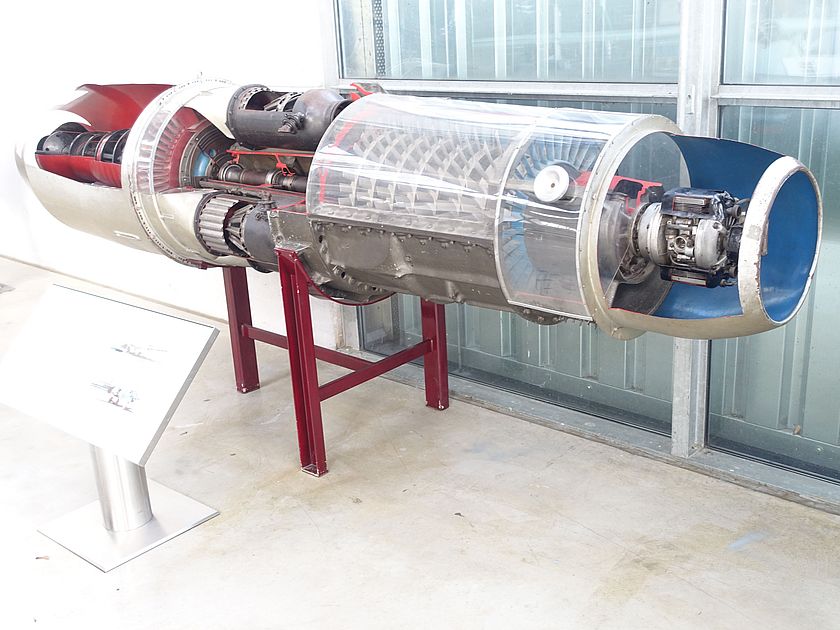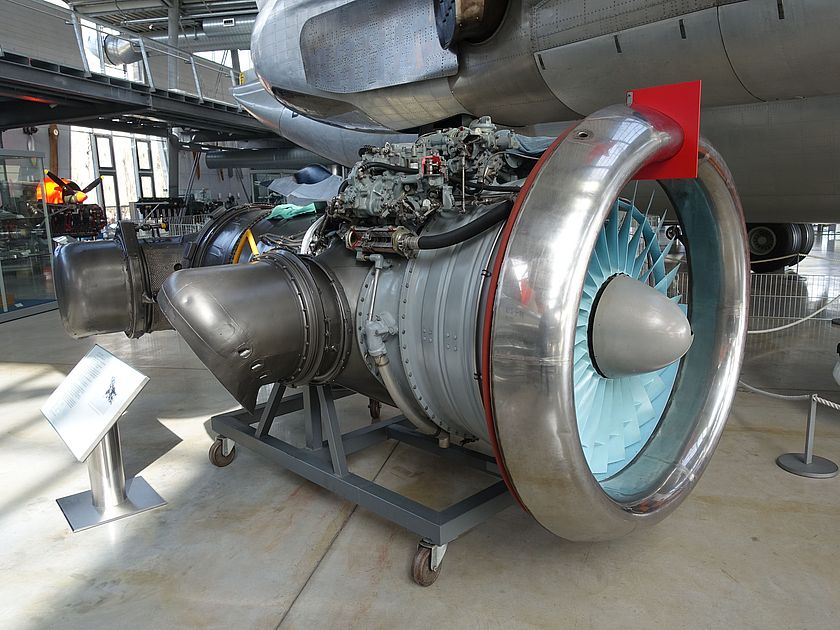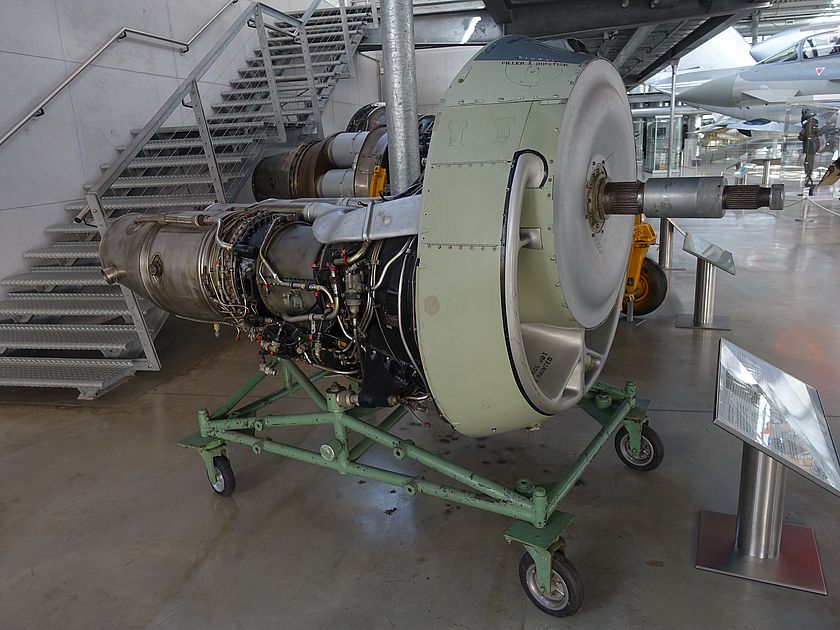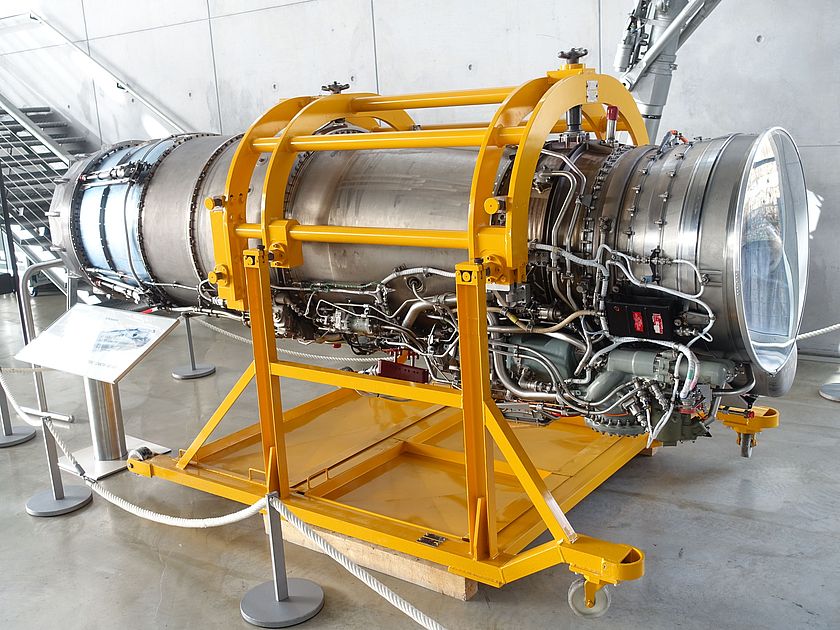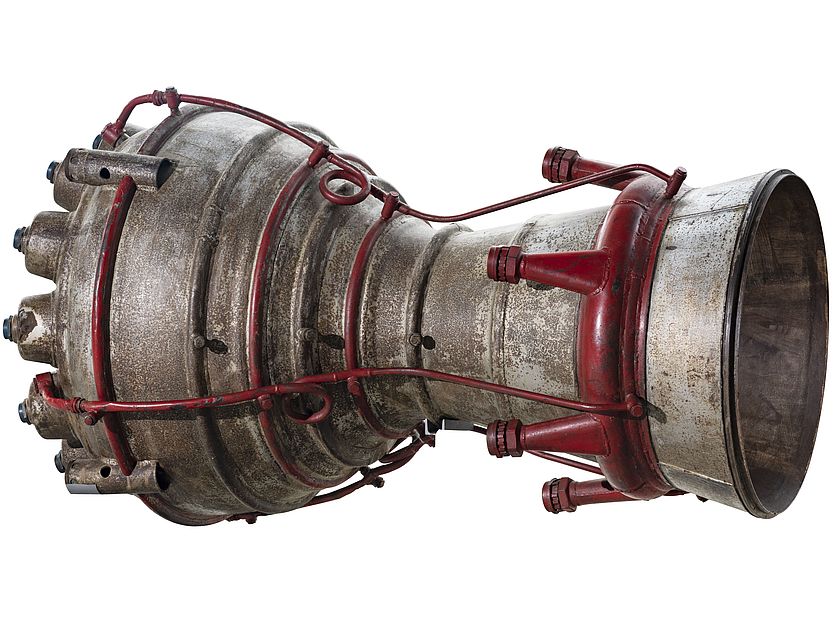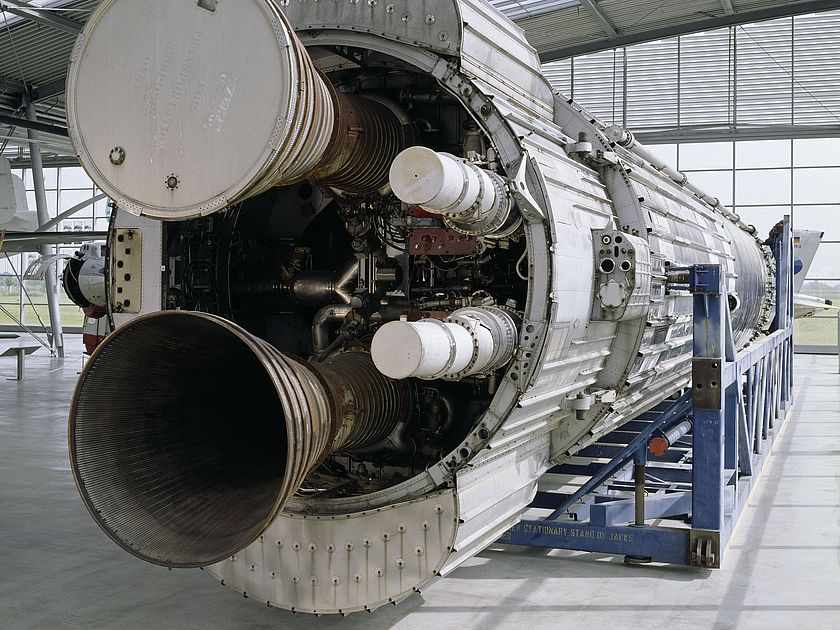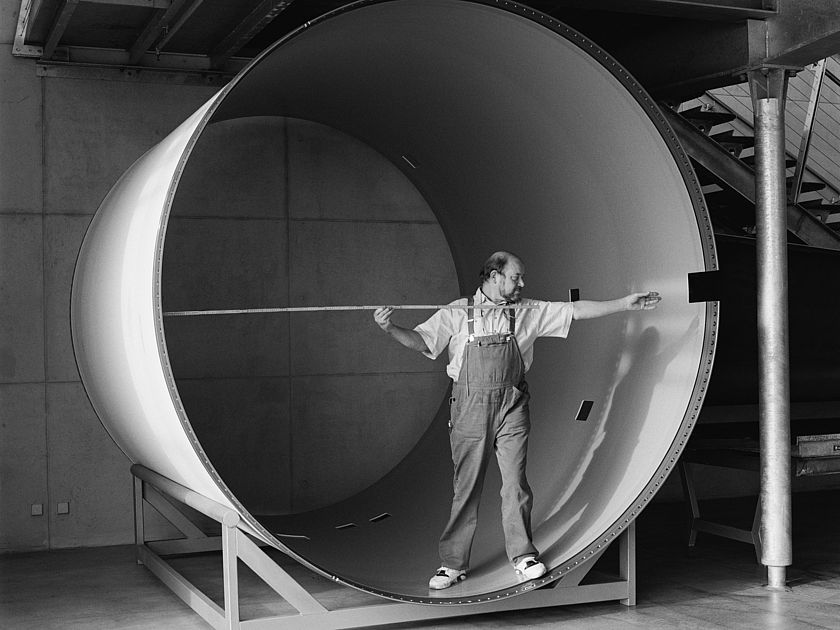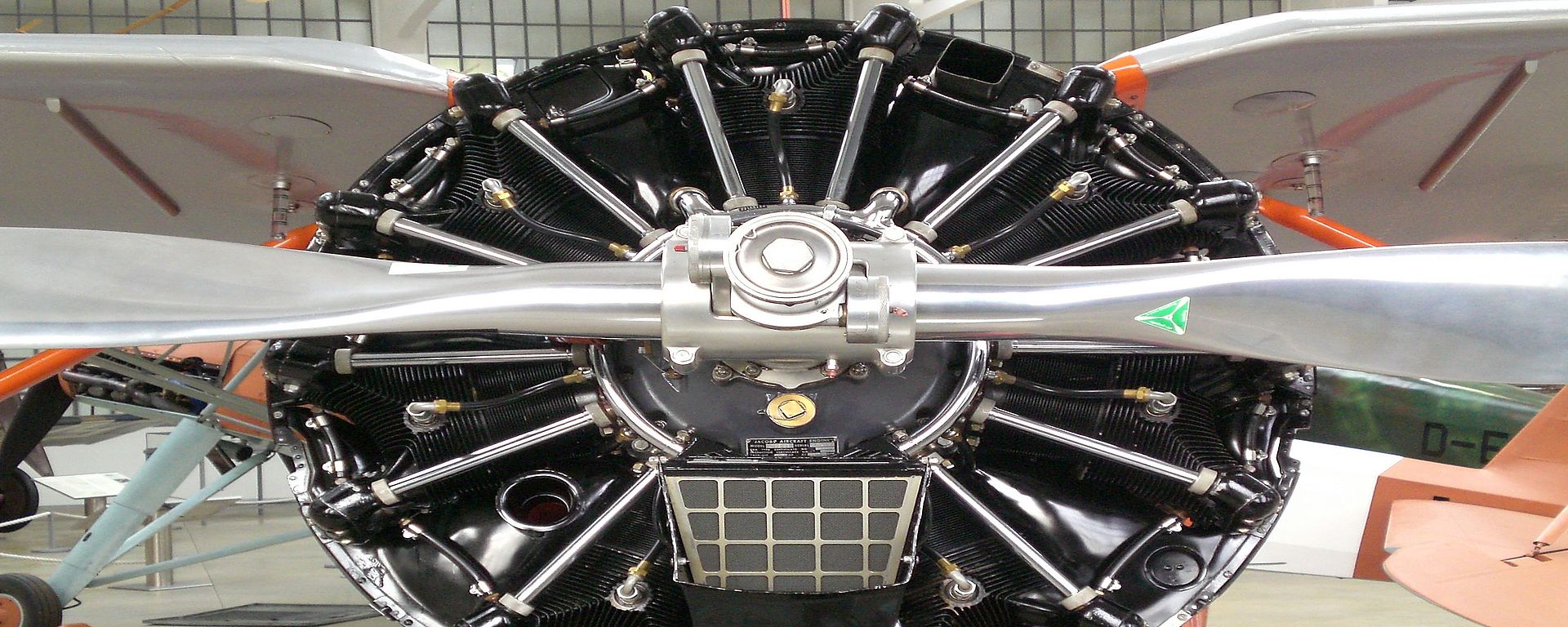
Photo: Deutsches Museum
Aircraft Propulsion and Rockets
Engines are of crucial importance to the performance of aircraft and rockets.
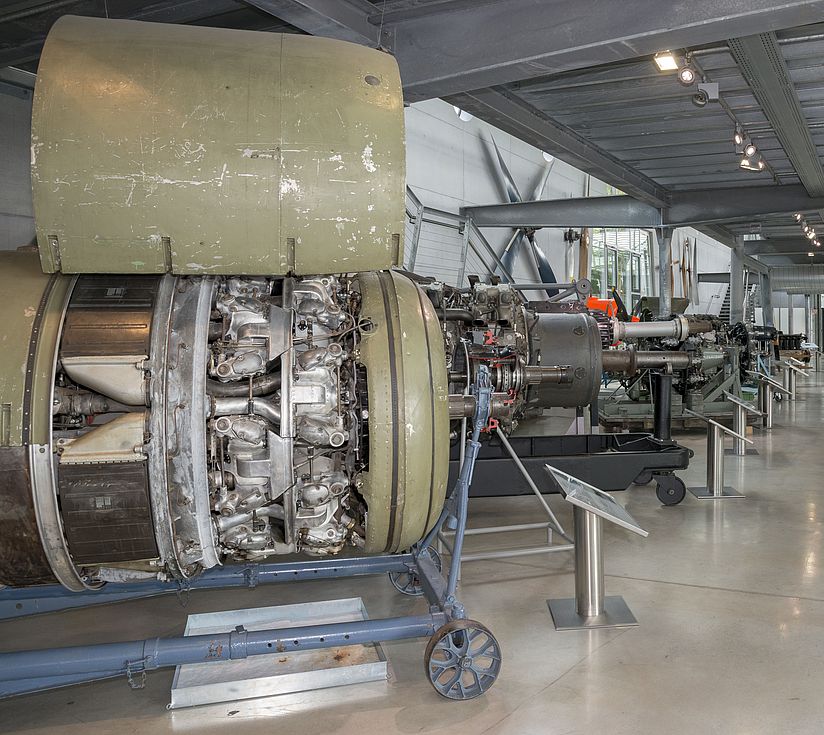
Photo: Deutsches Museum
Piston Engines
Aircraft engine construction quickly developed as an important field of technology in its own right, producing specialised high-performance engines, either in the form of air-cooled radial engines or as the alternative liquid-cooled in-line engines. Spurred on by the Second World War, piston engine technology reached its (performance) limits in the 1940s. Ultimate examples of this technical development includes the BMW 803, a quadruple radial engine with 28 cylinders and a power output of 2900 kW (3890 hp), developed in the last years of the war as a propulsion unit for long-range bombers.
Jet Engines
After the war, piston engines – or at least those in the high-power class – were replaced by jet engines. The jet engine allows considerably higher performance, greater altitudes and higher flying speeds far into the supersonic range. The first jet engines were developed in the 1930s by Frank Whittle in England and by Hans Joachim Pabst von Ohain in Germany. In the lower speed range, turboprop engines are more economical.
Rockets
Three exhibits document European rocket development. The rocket motor of an A 4 rocket, better known as the Vergeltungswaffe V 2, which was to serve as the National Socialists’ Wunderwaffe (wonder weapon) – represents the beginnings of rocket technology in Germany. The rockets found at the end of the Second World War were seized by the Allies as spoils of war and used as a basis for developing their own rocket projects. The dominant object within this group of exhibits is the 30-metre long Europa rocketfrom 1971. The rocket, which consists of three stages, is the only complete example still in existence and marks the beginning of independent European space launcher development. The current state of the art is documented by a casing segment of the Ariane 5-launcher. The segment, manufactured in Augsburg, is one of the giant booster rockets that are filled with a solid rocket propellant.

